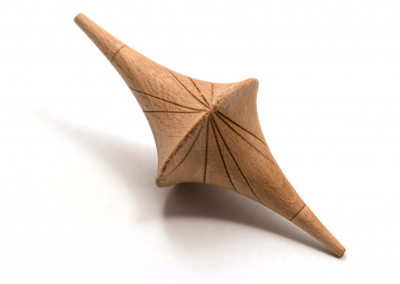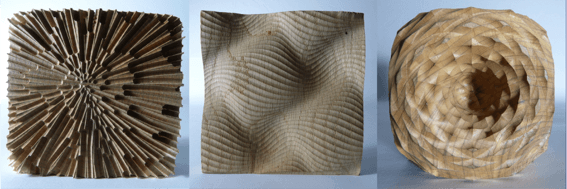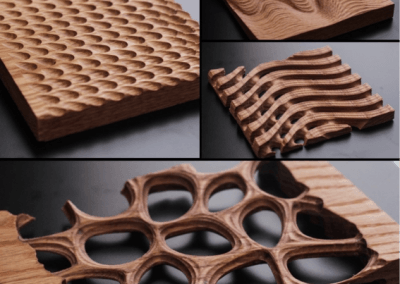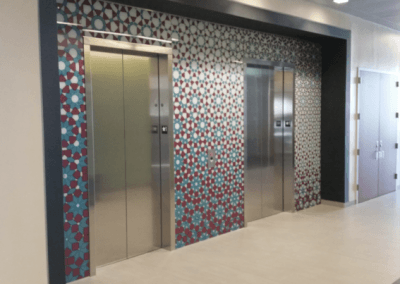A Q&A with Mathematical Sciences’ Edmund O. Harriss
Edmund O. Harriss, Ph.D.
Clinical Assistant Professor in the Department of Mathematical Sciences
In this conversation, Harriss shares his love of using mathematical images to create art and inspire interdisciplinary work across fields including architecture, engineering, physics, art and more, all while hoping to inspire students to find joy in the academic subjects that excite them.
Q: Tell us a little about your research, academic passions and/or role within the college. What excites you about this?
The heart of my work is trying to communicate the beauty and power that I see in mathematics, but which is too often hidden.
I do this through collaboration with colleagues on their research, through teaching and through mathematical art and toys.
For example, I have created two coloring books of mathematical images that are beautiful enough to draw people in, yet cover a wide cross-section of modern research mathematics. I have even sold copies to the wait staff when eating in a restaurant while showing the books to friends.
I am also excited by the huge possibilities of digital manufacturing technology to turn ideas into physical objects. I have developed my own software to create the paths to control the machines, that enables me (and hopefully others) to bring their ideas to life. The growing community at the University of Arkansas working with CNC (computer numerical control) and 3d printing from art, to architecture, to education is incredibly exciting.
Q: How long have you been at Fulbright College? What have you enjoyed most about your time here?
I have been in Fulbright College for eight years. I love being part of a wider academic community across many disciplines. able to work with faculty members across campus, from physics and engineering, to architecture and art.
Q: What do you most hope your students remember from their classes and/or interactions with you?
I hope that they reassess or strengthen their relationship with mathematics, finding a joy in the subject that helps them face the challenges that it can bring up.
I know from my own experience as a student that it was my love for the subject that kept me going at times that my talent gave up. I hope, as much as possible, to help students feel the same way and so encourage them to go further into the subject than they dreamed possible.
Q: What do you like to do during your time outside of the university?
I have a bad habit of turning my hobbies into aspects of my professional life. Though I have enjoyed immensely the development of the food, coffee and beer culture around North West Arkansas over the last eight years.
Q: What’s up next on the horizon for you?
The notion of illustrating mathematics is a growing field, and I plan to spend an upcoming semester at the Institute for Computational and Experimental Research in Mathematics (ICERM), a mathematics research center at Brown University.
I am looking forward to being part of the group developing the possibilities of computer visualization and manufacturing to make mathematics more accessible to researchers, students, and everyone else as well.
I also hope to stabilize my position at the University of Arkansas and explore the wide possibilities of interdisciplinary work taking mathematics into art and architecture, as well as science and engineering, and other places where I can work with others.
Q: Is there anything else you’d like to add or let readers know?
If they want to see some of my artwork in person, they can go to look at the elevator surrounds in Champions Hall.
Editor’s Note: Edmund O. Harriss’ work is also a part of the exciting and growing field of arts integration, which aims to integrate artistic approaches and curriculum into disciplines across campus, including the sciences, technology, engineering, mathematics, pre-medicine and more. Read more about this movement at the University of Arkansas in the Talk Business & Politics story, “Arts integration remains a top priority for UA officials.”
Andra Parrish Liwag
479-575-4393 // liwag@uark.edu









